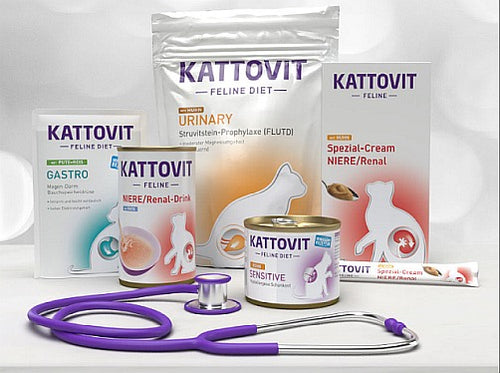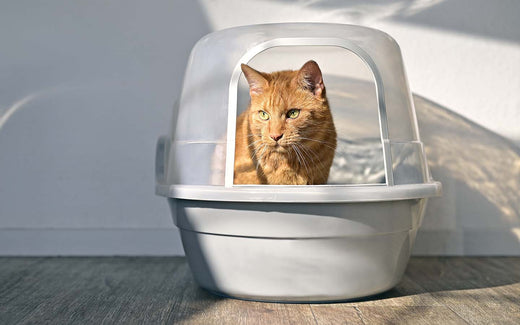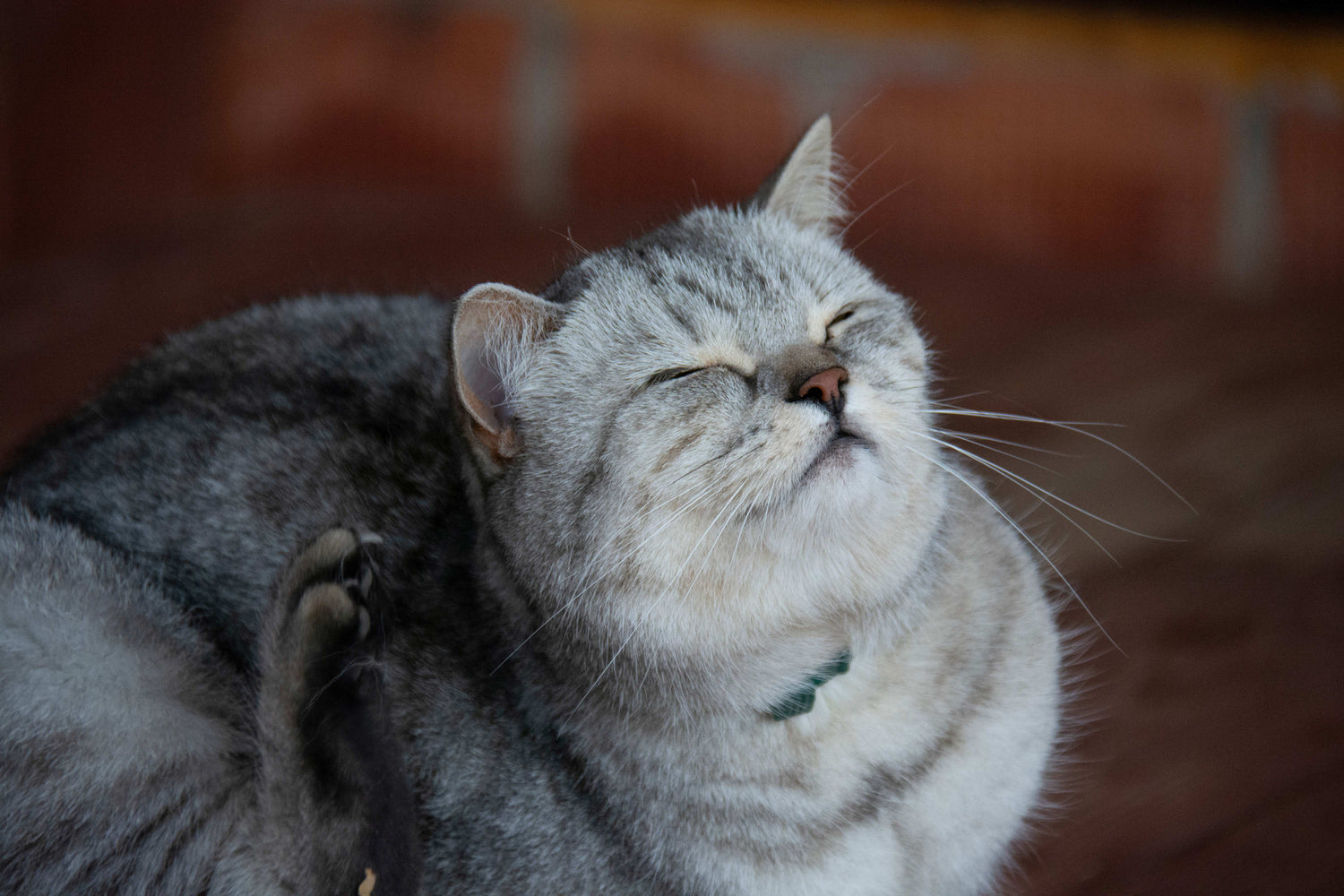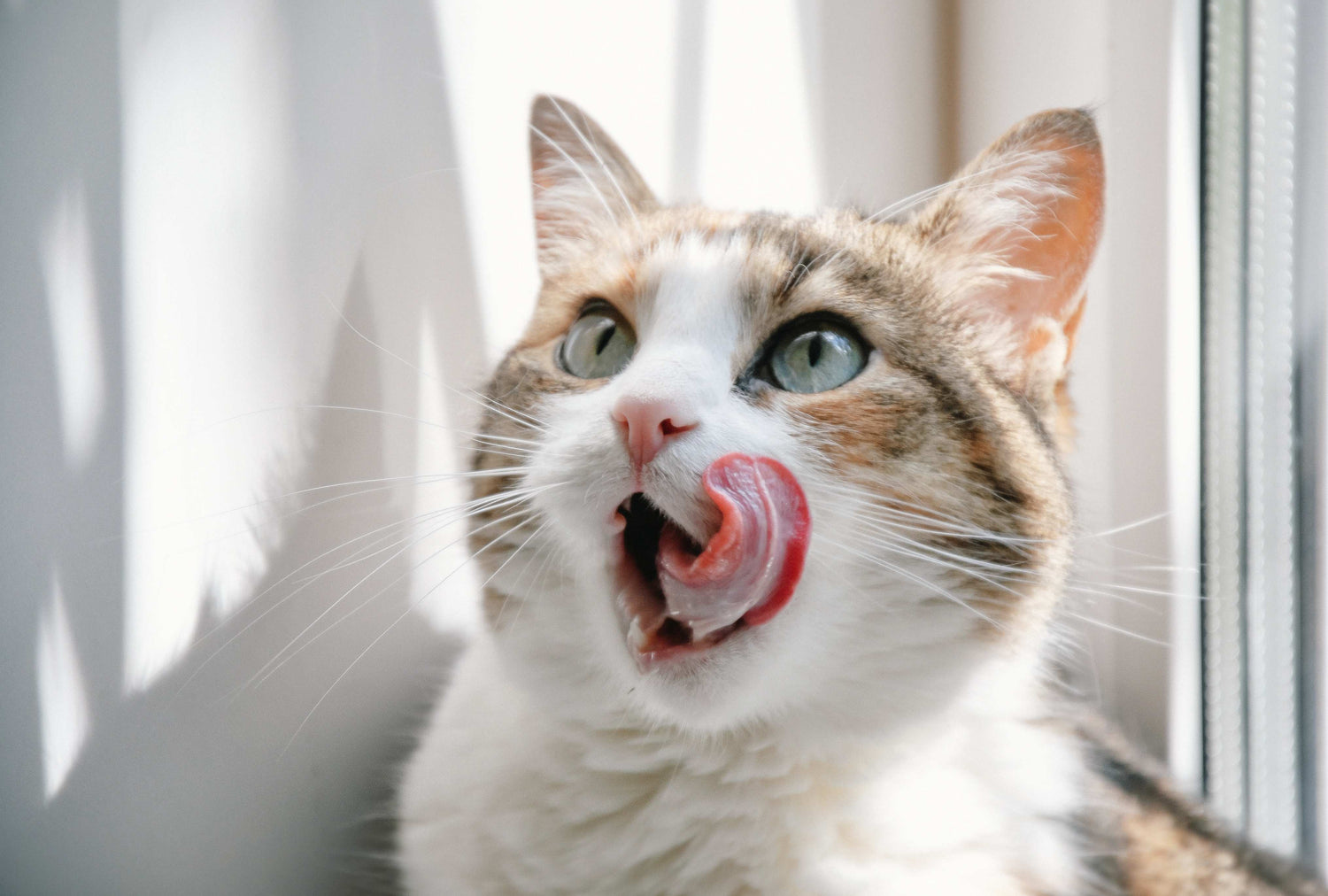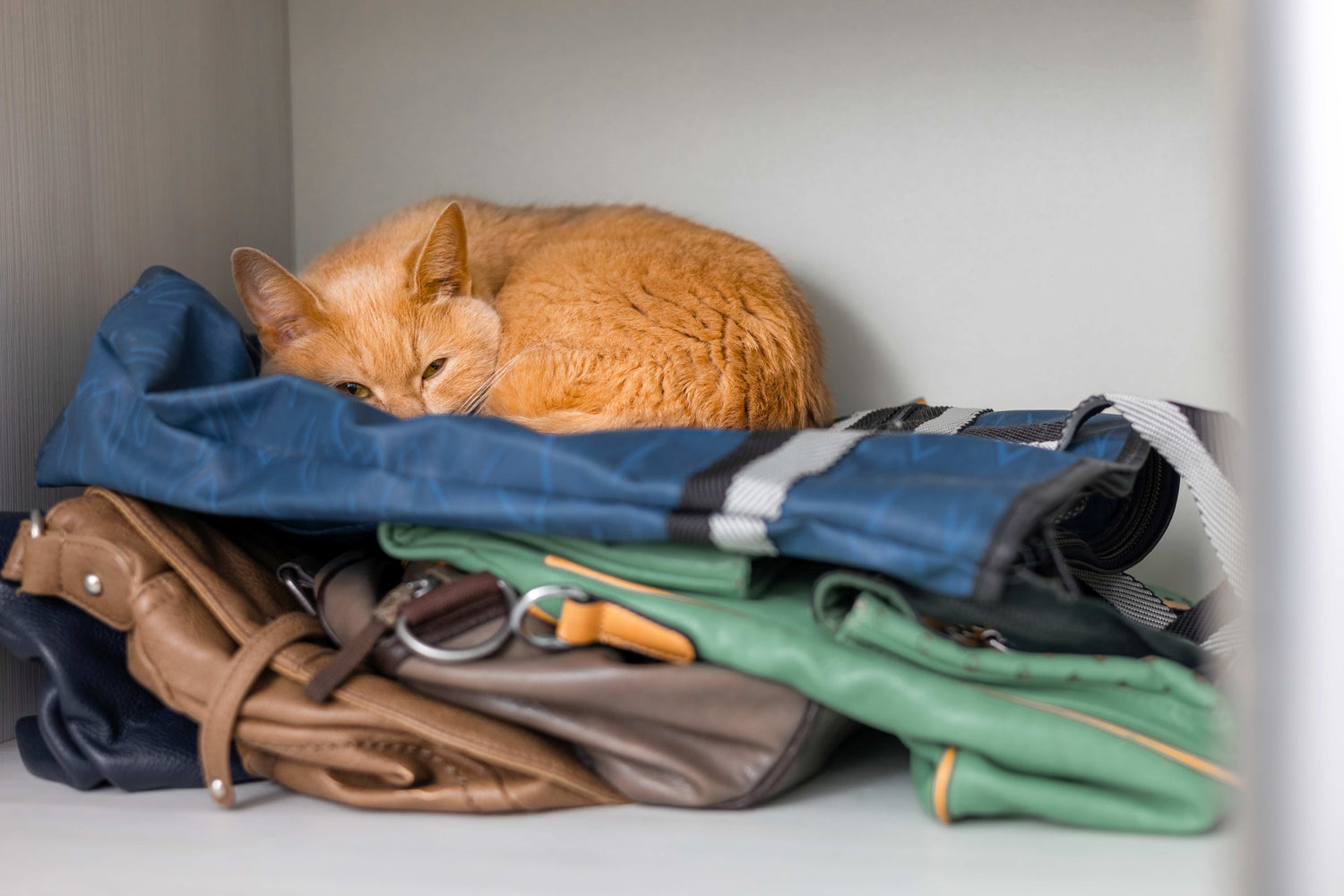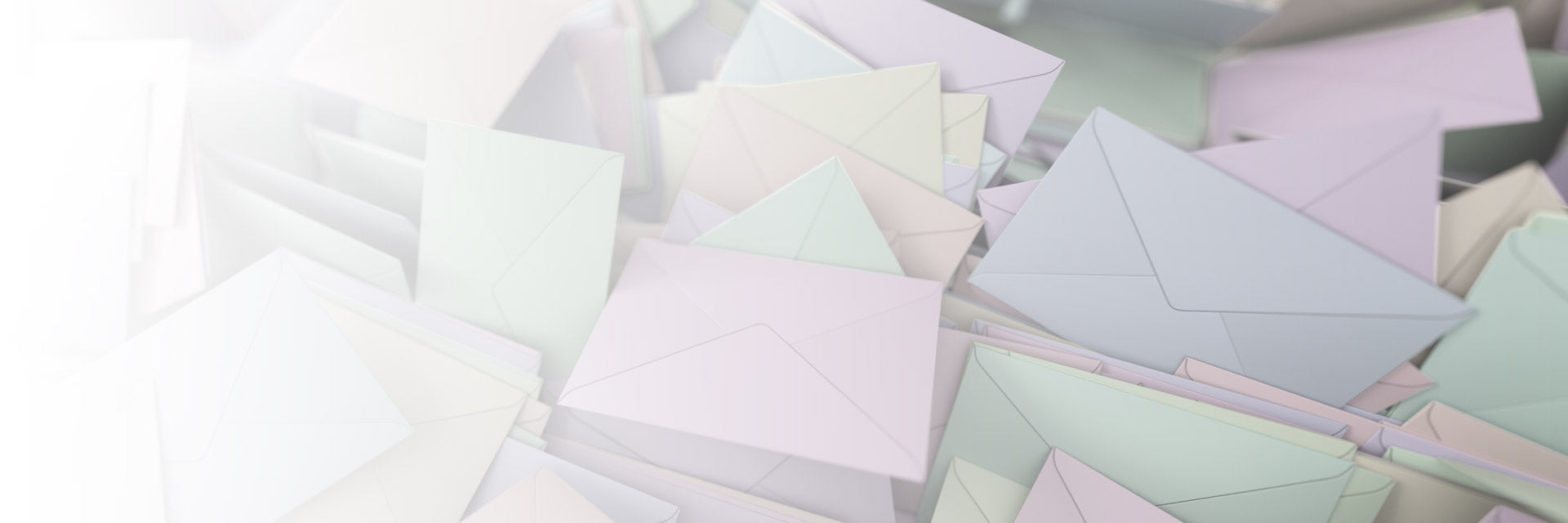If there is a puddle next to the litter box or somewhere else in the apartment, it is initially annoying. But there is usually no malicious intent behind it. Sometimes these mishaps are due to your cat having to urinate more often. There are many reasons for this. Read here what exactly is behind your cat urinating a lot and when there is cause for concern.
How much does a healthy cat urinate?
Since cats come in different sizes, breeds and weight classes, it is difficult to generalize about drinking and urinating behavior. On average, a cat fed wet food should drink 50 to 60 ml of water per kilogram of body weight per day. The upper limit is around 80 to 100 ml per kilogram. Urine output should be about half the amount drunk.
However, the normal behavior of your cat is more important than the general guidelines. If the animal has been living with you for a long time and has not suffered from any illnesses before, the amount that the cat drinks and urinates when healthy should be used as a guideline. If you have previously filled the water bowl daily and now you notice that the bowl is empty by midday, the cat is obviously drinking more than usual. The same applies to urine output: If you notice that there are suddenly a noticeable number of clumps of cat litter in the litter box or puddles of urine appear in other places in the apartment, this indicates increased urine output.
[Urinary+Niere]
Increased urination and increased thirst
Increased urination is called polyuria, and increased thirst is called polydipsia. Whether frequent urination causes increased thirst or increased thirst causes increased urination depends on the underlying cause. In healthy cats, the body constantly measures the fluid content and electrolyte concentration in the blood. If it detects an imbalance, it initiates appropriate measures.
If there is too little fluid in the blood, signals are sent to the brain that activate the feeling of thirst. The cat drinks and thus balances out the imbalance. The antidiuretic hormone is also released, which tells the kidneys to excrete less water. The result is less fluid loss and more concentrated urine. This can also be visually determined by the color of the urine: if it is darker, the body may be trying to conserve fluid. If there is too much fluid in the blood, the body excretes the excess through increased urination.
If the part of the brain responsible for thirst is not working properly, the cat may feel thirsty even though the body is sufficiently supplied with water. As a result, the cat will also urinate more. However, the cause of increased thirst and increased urination is less often a disorder in the brain than a disease of the urinary tract or metabolism.
Reasons why your cat urinates a lot
There can be many causes of polyuria. The cat's urinary tract is often responsible for the increased excretion of urine. The underlying diseases are not necessarily life-threatening, but should always be taken very seriously in order to intervene as early as possible.
cystitis
Just like us humans, your house cat can also suffer from a bladder infection. Urinary stones and grit cause small damage to the bladder, which then becomes inflamed. As a result, bacteria can settle in and cause problems. So if your pet urinates a lot and you notice a strong smell and a brown or red discoloration of the urine, it may be suffering from a bladder infection. This is usually treated with antibiotics and painkillers, so that the problems pass after a few days.
urinary stones
Urinary stones - also known as struvite stones or uroliths - are minerals from the urine that have accumulated and form crystals. They can cause damage to the urinary tract, just like the cystitis described above. If there are only small urinary stones in the cat's urinary tract, they can be excreted with sufficient fluid intake and a special diet . Polyuria is therefore a reaction of the body to flush out the urinary stones. If the urinary stones are too large, they can possibly lead to a blockage of the urinary tract and, in the worst case, to the rupture of the affected urinary tract. If you suspect urinary stones, do not hesitate to see a vet.
renal insufficiency
Another condition you should consider if your cat urinates a lot is renal insufficiency . This is a limitation of kidney function. The kidneys are responsible for regulating fluid and electrolyte balance, among other things. A malfunction often results in polyuria.
If the kidneys are overloaded, more and more parts of the organ gradually fail. Acute renal insufficiency, for example due to poisoning, can be completely cured with immediate treatment. Chronic renal insufficiency, on the other hand, cannot. Symptoms such as vomiting, fatigue or increased urination only appear after around two thirds of the kidneys have already become diseased. However, if you react quickly, the progression of the disease can be slowed down with a suitable kidney diet.
hyperthyroidism
In addition to urinary tract disease, metabolic disorders can also be the reason why your cat urinates a lot. Hyperthyroidism results in an excess of thyroid hormones. This causes the metabolism to work excessively. The animal then becomes very agitated and restless, but also has strong hunger and thirst. This also increases urine output. Hyperthyroidism can be caused by both benign and malignant growths in the thyroid tissue. Since hyperthyroidism is similar to other metabolic diseases such as the kidney failure or diabetes mellitus described above, a blood test is necessary for diagnosis.
diabetes mellitus
Diabetes mellitus is a sugar metabolism disorder. The glucose taken in through food does not reach the cells due to a lack of insulin. Since glucose is the energy supplier for the cells, a cat suffering from diabetes often appears tired and exhausted. It also shows an increased appetite in order to compensate for the glucose requirement, as well as increased thirst. The reason for this is the increased blood sugar level. The body tries to excrete the glucose contained in the blood through urine. This leads to increased water loss and therefore to an increased water requirement. Your cat therefore drinks more and has to urinate more often.
Diabetes mellitus can be treated well in cats. If the disease is detected early, it can sometimes even be completely cured. However, the main focus is on normalizing blood sugar levels. The veterinarian will usually prescribe insulin therapy and a diet tailored to diabetes to regulate blood sugar.
poisoning
In addition to diseases of the kidneys and urinary tract as well as metabolism, poisoning can also contribute to polyuria. Your cat's body tries to flush the toxins out of the body by excreting more urine. The substances can also affect other organs, which also causes your cat to urinate a lot. Therefore, make sure that you do not have any poisonous plants or cleaning products in your home that your house cat could reach and eat. Controlling outdoor cats is a little more difficult. However, if you notice other symptoms in addition to polyuria, such as fatigue, confusion, diarrhea or vomiting , you should see a doctor immediately.
Poisoning can also be caused by bacteria. In the case of blood poisoning, bacteria can attack other organs such as the bladder. This can also lead to a bladder infection, which causes your cat to urinate more. If your cat has been injured or had an operation shortly before you notice polyuria, it could be suffering from blood poisoning. Symptoms such as tiredness, loss of appetite or fever can also occur here.
Similar symptoms also occur with inflammation of the uterus. At the end of a cat's heat, bacteria can enter the open cervix and thus reach the uterus. In unfavorable conditions such as stress or hormonal imbalance, the bacteria nest in the uterus and provoke inflammation. In addition to fatigue and fever, purulent vaginal discharge often occurs. The toxins produced by the bacteria also impair kidney function. This in turn leads to polyuria and polydipsia. If you notice the symptoms mentioned in your cat, an early visit to the vet is essential to maintain the function of the uterus and kidneys. In animals that are not mated, castration also prevents inflammation of the uterus.
Nutrition
Your cat urinates a lot, but none of the diseases or poisonings mentioned above are possible? Then the polyuria could also be due to diet. For example, if you have recently started giving your cat more dry food, it will also drink more water to balance out its fluid levels. This means the animal has to urinate more. In this case, your pet's body should get used to the change in diet after a while and adjust its fluid levels accordingly.
A diet rich in sodium also contributes to increased urine output. Sodium is one of the electrolytes found in the blood. If the concentration is too high, the body excretes more sodium through the urine.
Behave
If your cat urinates a lot, you should not ignore the animal's psychological state when making a diagnosis. If you do not notice any major changes in the amount of urine in the litter box or in the amount of water it drinks, but your cat urinates in various places in the house, this could indicate marking behavior. It is noticeable that these are usually small splashes of urine and not large puddles. Cats usually urinate while standing against clearly visible objects such as plant pots. Unneutered tomcats often mark their territory. But stressed or anxious cats also tend to mark. They do this to draw attention to themselves, for example when they have moved or have had kittens.
An apparent increase in urination outside the litter box can also be due to the hygiene of the litter box. Cats are very clean animals. If the litter box is not cleaned regularly, they will often refuse to go to the toilet and leave puddles of urine elsewhere. Some cat litter is also not accepted by every house cat. This is especially true for those with odors: cats are sensitive to odors, so the litter should be as odorless as possible. Many cats also find a lid on the litter box unpleasant. On the one hand, it increases the smell and on the other hand, they feel cramped in it. The animals need enough space in their litter box to turn around and scratch.
If your cat eats it, she may not be able to process it and will excrete it again. In the worst case, it will affect her sensitive digestion. You should feed her several small portions.
Since the animal has certain nutritional needs, namely good nutrients, fat and protein, it is best to change the food. Make sure that it has a high meat content and lots of wet food. Here, nutritional supplements are advisable, as they are designed to fatten up undernourished and weakened cats and eliminate deficiency symptoms. You can feed dry food in small amounts from time to time. But always make sure that there is enough water available. If your pet is picky or still does not have much of an appetite, stimulate it with tuna or a few treats on top of the wet food.
Important for diagnosis: Which symptoms indicate which disease?
Sometimes it's just the little things that distinguish one illness from another. The vet will make the final diagnosis, but with the right knowledge of the symptoms you can also rule out certain illnesses and also pay attention to other behavioral patterns. This will help the doctor later when taking your pet's medical history.
pollakiuria and stranguria
In addition to polyuria, there are also pollakiuria and stranguria. Unlike polyuria, pollakiuria also causes more frequent urination, but only in small amounts, usually due to irritation of the bladder. The total amount of urine remains unchanged, whereas polyuria causes increased urination. Stranguria is the compulsive and painful straining of urine. Pollakiuria and stranguria often occur in connection with bacterial cystitis or urinary stones. By straining, your cat is trying to expel the urinary stones in the urinary tract. In general, the symptoms usually indicate FLUTD (Feline Lower Urinary Tract Disease).
urinary tract obstruction
A urinary tract blockage is caused by urinary stones or mucous plugs. It manifests itself in a similar way to pollakiuria, with the passing of small amounts of urine. Sometimes the cat cannot pass any urine at all, even though it constantly goes to the litter box. This creates the impression that the animal has to go to the toilet frequently. If the cause of the urinary tract blockage is not eliminated in time, it can be life-threatening for the cat. If you notice that your pet frequently goes to the litter box, but the litter remains untouched, you should see a vet as soon as possible. Other symptoms that you may observe with a urinary tract blockage are vomiting, pain in the abdominal area and rapid and shallow breathing.
urinary incontinence
The litter box remains empty, but there are large puddles of urine in other places? This is a suspected case of urinary incontinence. This means that your cat cannot retain urine in its body and lets it flow uncontrollably. This often happens when it is sleeping, which is why the sleeping places are usually wet. With urinary incontinence, the total amount of urine per day remains the same. Your animal therefore does not drink any more liquid than usual. It is simply no longer urinating in the intended place - the litter box. Urinary incontinence should not be confused with marking. Incontinent cats lose large amounts of urine and simply let it flow, while animals that mark leave small splashes of urine on objects while standing.
uncleanliness
Cats are very clean animals. If you start to become intentionally dirty, something is usually bothering them. Uncleanliness is associated with marking behavior, but your pet can also deliberately urinate large amounts of urine in other places. So if you find your house cat squatting while urinating outside the toilet, it is not urinary incontinence: the cat is intentionally not doing its business in the litter box. The total amount of urine also remains unchanged. The reasons for uncleanliness are usually psychological: stress, fear or even protest. To rule out more serious diseases, it is important that the urine does not have a noticeable brown or red color and does not smell or other symptoms accompany the behavior.

When should you see a veterinarian?
If your cat urinates more than usual and suddenly develops other symptoms such as apathy, vomiting or diarrhea, you should not wait longer than 12 hours before visiting the vet. If the animal is fine in addition to the increased urination, observe its drinking behavior over three to four days. To do this, measure the amount of water you give your cat and check 24 hours later how much water is left. This will help you determine whether your pet is permanently drinking more liquids. Make sure that the cat does not drink from other water sources and that only it has access to the bowl. The same applies to urine output: observe approximately how much urine is in the litter box. This is not always easy, but there is special litter made of plastic granules that does not absorb urine. This will help you roughly measure how much your cat is excreting. If the condition remains unchanged for three to four days, see a vet. Bring a urine sample, preferably the first morning urine, and report on the observations you have made in the previous days. This will enable the doctor to make the most accurate diagnosis possible with additional blood samples and tests.


